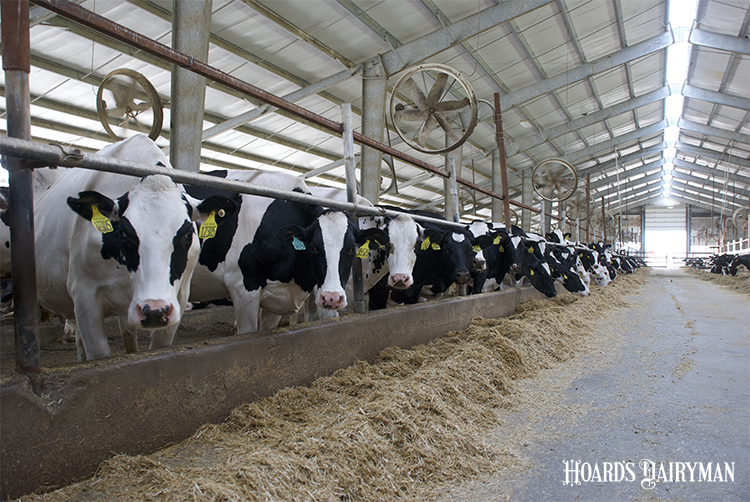
There’s never a great time to have business costs of just about every kind rising, but if pandemic recovery, record inflation, and a war were going to force prices for farm inputs up, at least it’s happening at a point when milk prices are also reaching record highs. So far, those prices seem to be able to cover the greater costs.
We’re also coming out of a period of the highest farm income in years. Of course, much of that was driven by government pandemic assistance such as the Coronavirus Food Assistance Program and Paycheck Protection Program, reminded Sam Miller on the April 6 Hoard’s Dairyman DairyLivestream.
“That really helped liquidity and helped strengthen balance sheets,” said Miller, who oversees all agricultural banking at BMO Harris. “The working capital positions and the balance sheet positions of dairy farms, and farms in general, are the strongest they’ve been in a number of years.”
Between this picture and current milk price levels, Miller commented that this is setting up to be a good year for dairy farmers. That could be especially true if inputs were prepurchased. However, he also reminded that this price balance will correct at some point, saying that in his more than 30 years in banking, expenses always seem to correct after income. This good year could be a valuable opportunity to be prepared for that market correction.
Two suggestions
Miller offered two recommendations on how to use that excess cash to buffer against a future when the income picture is not as rosy. The first is to build up working capital.
“If you’ve got accounts, get them cleaned up. Be on prepaid or early pay instead of having accounts payable,” the experienced banker said. He continued, “Pay down your line of credit so you’ve got that availability.”
The second suggestion focused on a topic the panelists addressed multiple times and farmers know all too well — labor. The work environment changes that developed due to the pandemic are only likely to stick around. And so are the higher wages.
“It’s going to be tough to get that [labor cost] back,” added Ben Laine, a dairy economist with RaboResearch. “Any investments you can make in the medium to long run to try to optimize your labor is beneficial.” Automation could be a smart investment as long as it’s available to purchase, acknowledged Cornell University’s Chris Wolf.
Preparing for a market correction while you can, keeping an eye on margins, and managing price risk are critical and, of course, more challenging when there’s volatility on both sides of the equation. As Miller said, though, “The good news side of that is I’d rather see somebody have to make those decisions when you have a high price environment.”
To watch the recording of the April 6 DairyLivestream, go to the link above. The program recording is also available as an audio-only podcast on Spotify, Google Podcasts, Apple Podcasts, and downloadable from the Hoard’s Dairyman website.
Re-register to continue receiving updates
The next broadcast of DairyLivestream will be on Wednesday, April 27 at 11 a.m. CT. In the new year, we have moved to a new system, and you will need to re-register to continue receiving email updates and links to the webcasts. You can sign up here now. Registering once will sign you up you for all future events.








